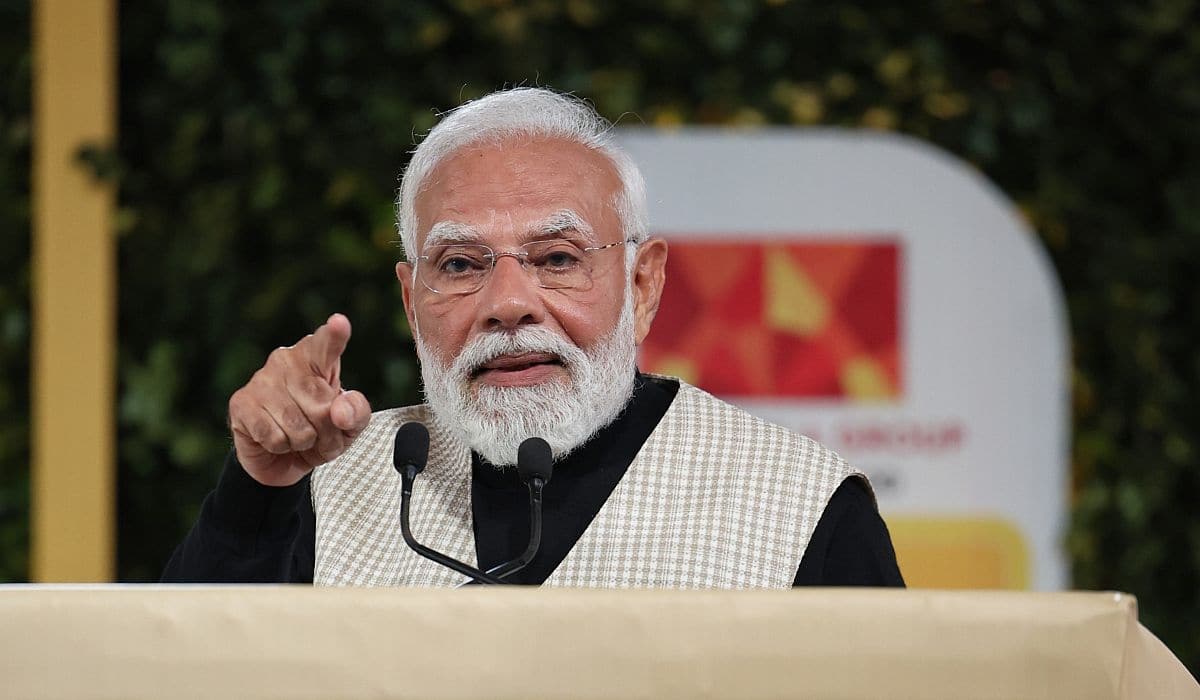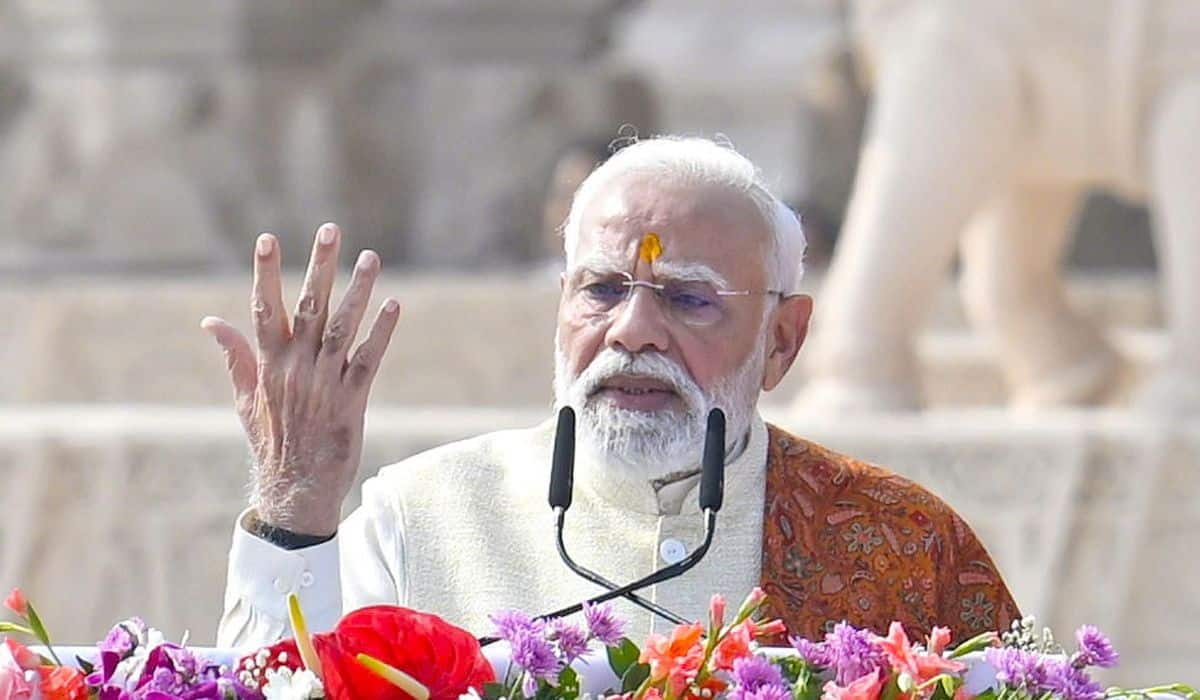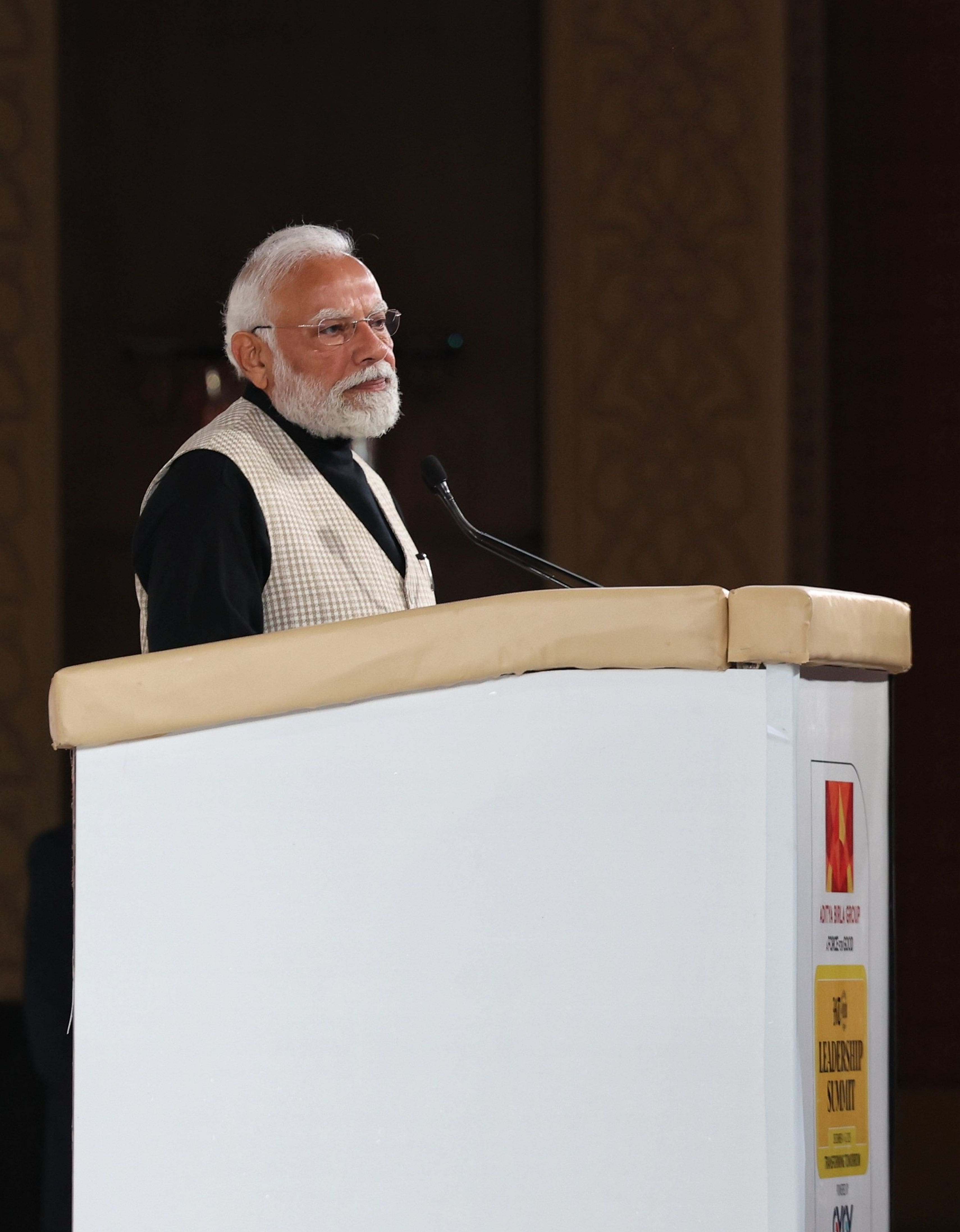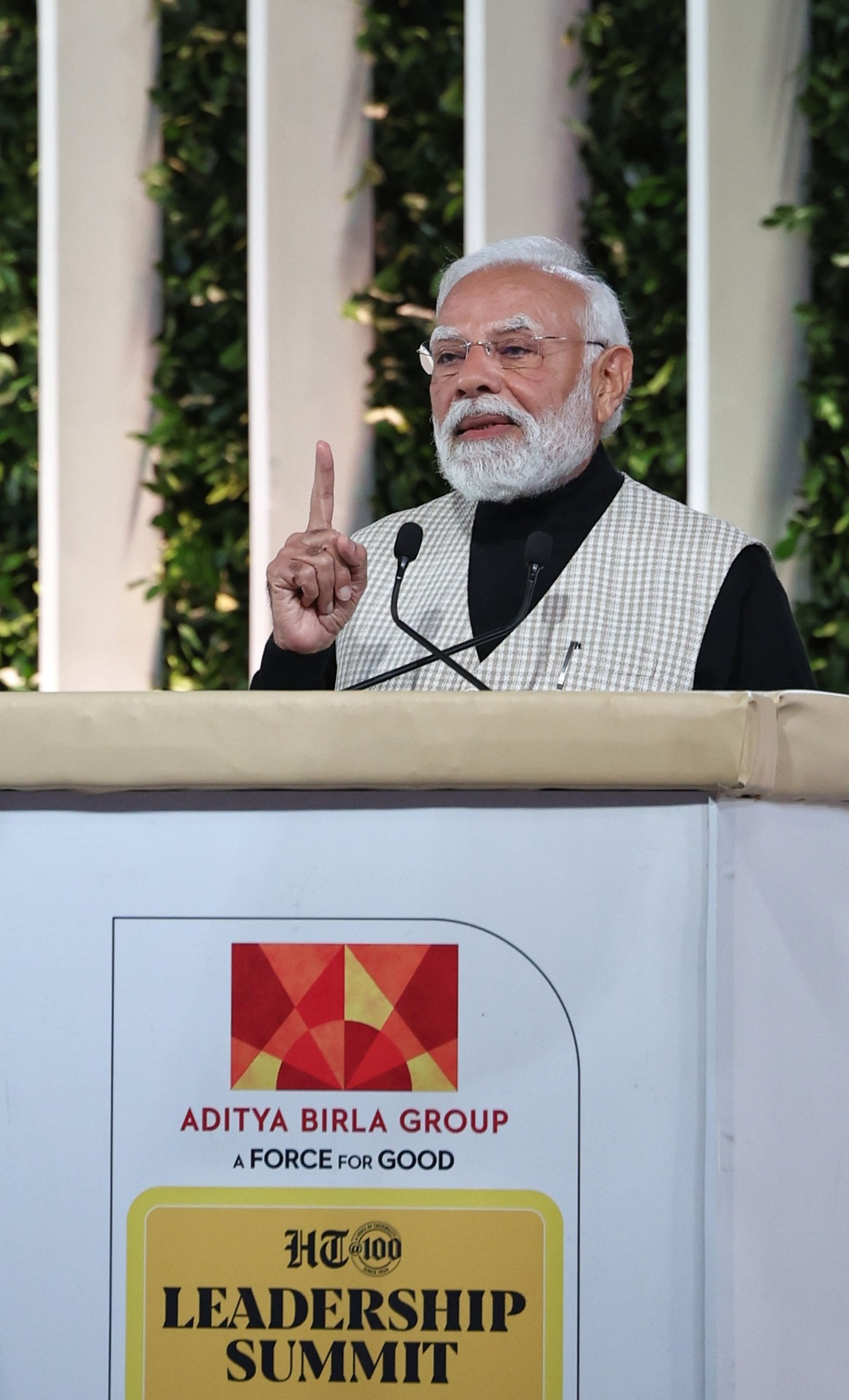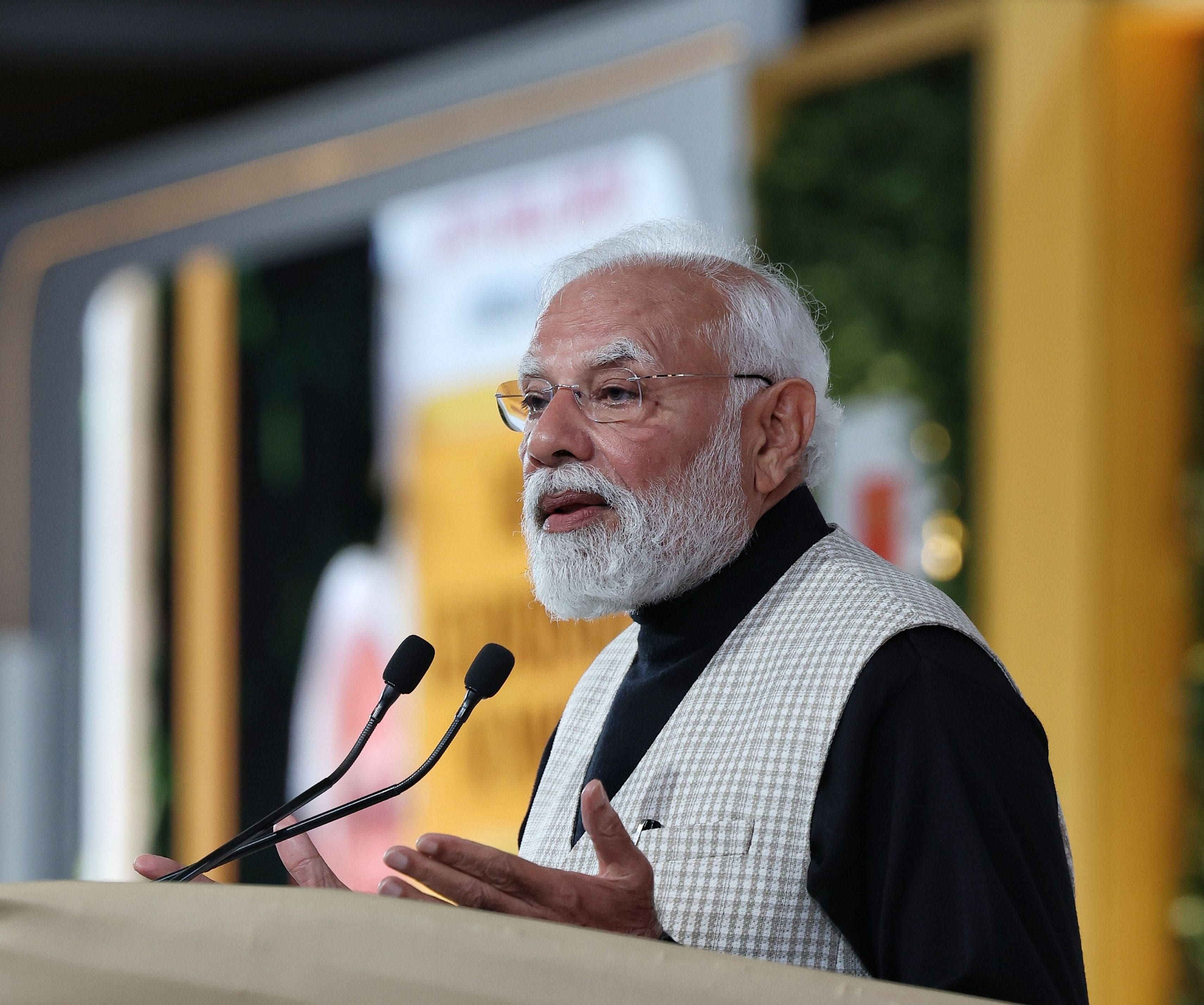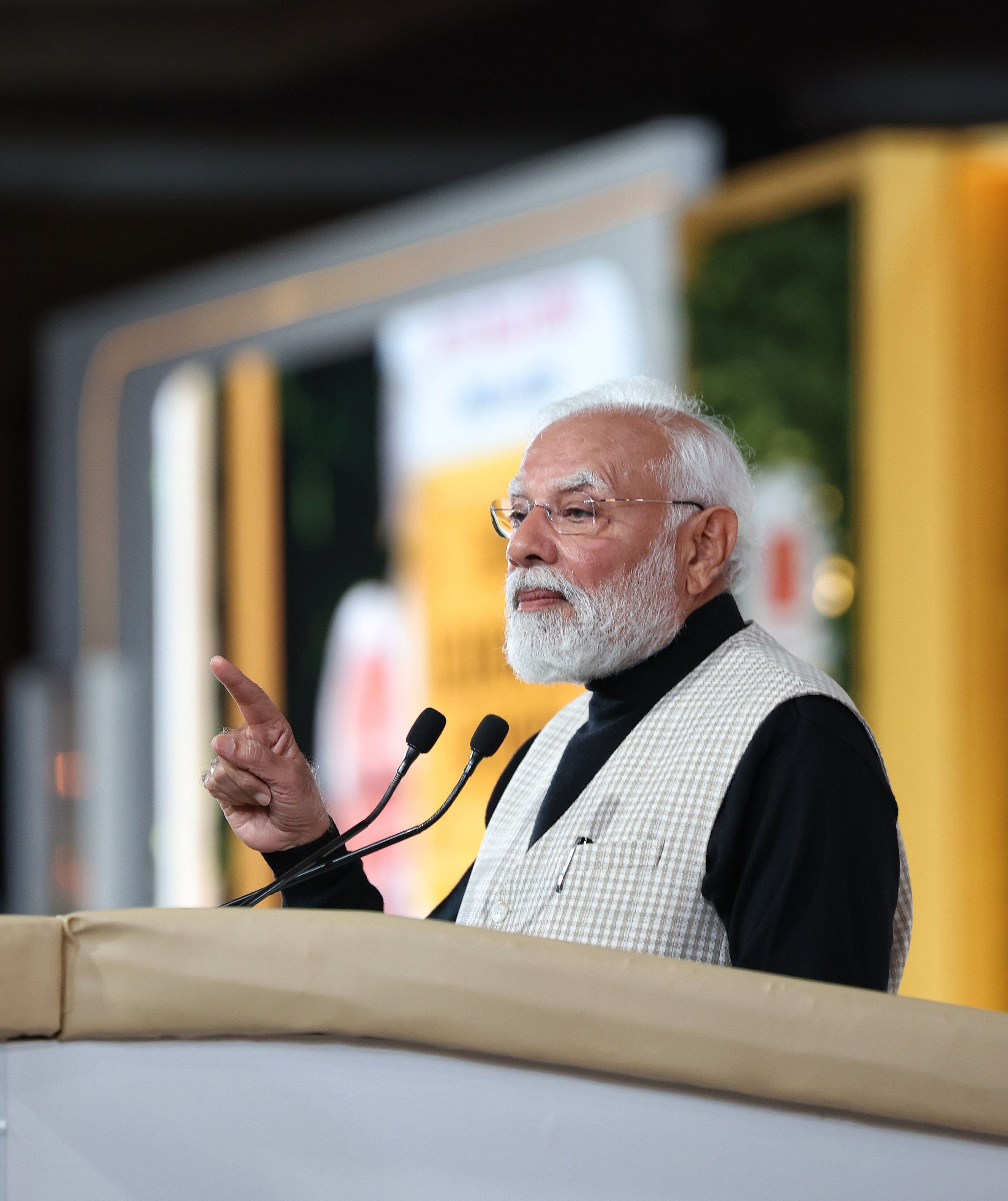My colleague and Cabinet Minister Dr. Harshvardhan ji, all the respected members sharing the stage and gathering dedicated to Ayurveda!
It was being announced that a brainstorm-churning has happened here for three days and elixir of life has been found. So I have also come to take this elixir so that few drops would come in my fate and I don’t know whether I would get it a full pitcher or not. This time the theme is something like “Health Challenges and Ayurveda”. Isn’t it? You must have discussed on a variety of points but to me the biggest challenges are WE, the people attached to Ayurveda. It is hard to find Ayurveda-doctor who is 100% dedicated to it. Even they realise that they can’t make it through this path and that they have to take the path to Allopathy. So they ask patients to start with Allopathic medicines for first three days and Ayuvedic treatment can be taken care of in successive stages. I feel this mentality is the extraordinary challenge against Ayurveda. If these persons practising Ayurveda would not be committed, devoted and confident then how those patients would trust them?
When I was a kid, there was a joke in circulation that a traveller went to a city. He visited a restaurant and asked to see the owner. He was told that the owner has gone to take a meal in a restaurant across the road. Now think who would like to eat in such restaurant? They can’t win the trust of others, who don’t believe in themselves and their traditions. Crisis is not of the “Ayurveda”, but its practitioners. I don’t know how do you take this discussion, in a pleasant or bitter way? But if it is bitter, then I think that I am referring the matter exactly according to the norms of Ayurveda because in Ayurveda what tastes bitter at first turns sweet ultimately.
I have been meeting many people and talking to them. Last time when I was Chief Minister of Gujarat, I had called meeting of specialists of Ayurveda. This was not my domain at that time and I was working within state of Gujarat, but there was a need of awareness about Ayurveda. Ayurveda is not a field to be limited to a certified doctor. Our ancestors have made health, a part of our life. Today we have outsourced our health and lifestyle. Those days, health was not outsourced. It was part of lifestyle and due to that every person, every family was aware about wellness of body. If any problem would pop up, then what could be possible solutions, people were conscious about that too. Even today you must be feeling that experience.
At times when you are travelling in a train or bus and suppose a baby is crying a lot, you must have observed that 12-15 persons would come there and they would provide a variety of suggestive measures. One would say to give a dose of something, another would suggest some different dosage and third would even take out some packet asking to give a dose of that. We don’t even ask who that person was, whether he was a doctor or not. But when he assures us, we believe him that by giving that dose would bring relief to her as the baby is in pain and crying and he might have a solution to this. We see these very often in course of our journey in a train or bus that if a co-passenger falls sick then one or other passenger would come over and treat him, even when he or she is not a designated doctor or specialist in Ayurveda, nor a graduate in Ayurveda from Jamnagar University. But because this has been a natural practise in India and a habit incubated under traditions, we have some knowledge of it. Gradually we outsourced the complete health sector. If any medical problem crops up, we have to take advice and consultation and we have to go according to prescription. If that treatment is successful then it alright otherwise we go to other practitioner…we change the consultancy.
The first and only necessity for the solution of this problem is that we should not compromise our core sector, let me be a student of Ayurveda, a teacher of Ayurveda or engaged in manufacturing of Ayurveda medicine or a promoter of holistic healthcare. We should be 100% committed to what we do, only then we will start seeing the results. Some negative circumstances have been encountered, due to which tired and desperate people are traversing back to the basics in the name of “Holistic health care”. They are feeling that modern era medical science might give instant relief but it doesn’t guarantee a healthy body as a whole. If at all we want the assurances of health, we would have to choose holistic approach. Be it naturopathy, Ayurveda, strict diet-control method or homeopathy; there is always a way in that direction and perhaps that is why Ayurveda is known to us as “Panchamveda”. It has been valued and nurtured as such. There is not a part from the root to the fruit of a tree in nature which doesn’t find a valuable position in Ayurveda. From the root to the fruit is a great deal and it means our ancestors must have had a microscopic study of attributes, its nature, its utility in practice. And after all those extraneous work they would have reached the miraculous position. How do we keep that great resource in modern times is the second challenge to us. It is not possible for us to wait for this world to learn Sanskrit language and then accept the preparative. But the least we could do is to translate the exalted resource in the language this world understands. So the workforce engaged in this industry should be motivated to do the research in the area with a time limit under an institutional framework and present all the research works.
Third point is regarding research articles published in science magazines all over the world. Can’t we altogether launch a movement and try to put some pressure and also encourage people involved in this sector to publish a research article in every Ayurvedic session…make them a part of curriculum. One should be made to write an essay or article in modern terminologies with a profound study on a subject for once at the interval of every two year if he or she is a professor and in case of a student, in the final year of their education . And it should be published in international magazines or we should better say that 10% of all the space in the magazines of international medicine should be dedicated to Ayurveda. We would have our research articles at par though differently. If we could find a place for our research articles in at international forum then world working on medical science would notice it. If we would dedicate 20% of our work and 20% of spaces would be dedicated to Ayurvedic research articles then the world reading modern medical science would notice it eventually, and may be this would change the perspective of modern medical scientists in a positive way. I feel this might crystallize into a new stimulant to give new directions to Ayurveda.
But for this there should be a proper follow-up and identification of medical science magazines available globally. We also need to find out if among all those magazines whether or not Ayurveda has a place. And if Ayurveda is to given some space right there, then someone would have to discuss this and keep following it up with the concerned. In a sense we have to launch a movement that where there is a global acceptance, how we carve a niche for us there. Till a matter doesn’t reach to us via America, we don’t usually accept the same, and it’s become a human tendency and in particular a feature of our fellow countrymen after 1200 yearlong slavery it has penetrated deep into our veins. So if an article is published in an international magazine then rest assured that the Ayurvedic doctor would adorn his drawing room wall with his photo frame. I don’t know if people associated with Ayurveda have studied these or not. When Pundit Nehru was the Prime Minister, then these matters were dealt with differently in those social conditions. Government then looked for an approach to promote Ayurveda on grounds that why such a massive stream of ours is getting destroyed. Then a Hathi commission was constituted. There was a Cabinet minister named Jai Sukhlal Hathi and commission was assigned a task to come up with suggestive measures to rejuvenate and promote Ayurveda. It’s perhaps a report of year 1960 and quite a marvellous one. In that report there is an interesting suggestion on the first page itself. In that, it’s been said that there is a need to change the packaging, because that packet…all those herbs is to be taken a bag full…get the same boiled, re-boil with two litres of water, and the next time it is to be halved…then keep it overnight…boil again to reduce it to half. These practises were not swallowed by common people. He further writes that it needs to be packaged as such that common people find it easy to use. Gradually there has been some change. Today people opting Ayurvedic medicine don’t face such challenges of taking the herbs back home, boiling them and then make use of it. Now they find it readymade, in medicinal forms, in tablet forms and likewise. That mean these are available in all the forms at par with an allopathic medicine. We are in need of such developmental changes.
So there should be joint efforts in a year to two consisting of researchers, students and manufacturers in Ayurvedic field and not for doctors to prescribe the medicine manufactured for some specific company. Please understand the point I am referring to and inculcate it. It should be ensure how the production of medicine can be improved. Likewise, whether the herbs we have studied in Vedic texts are available and this is a field of intense research. There would be many medicines written in Vedic texts that would prescribe a root of a specific tree or plant to be used for medicinal purposes. Today it would seem difficult to find those trees and plants if searched in accordance with the description illustrated in those texts. I have this experience because when I was the Chief Minister of Gujarat, I had ordered to construct a “Teerthankar-forest” for all the 24 teerthankars as they got their enlightenment under some or other tree. So I thought constructing a “Teerthankar-forest” and plant those 24 trees right there in that forest. When I started searching for the trees, I was shocked. I went as far as Indonesia to find those trees but couldn’t find them all. It means one of the biggest challenges before us is the basic of Ayurveda, which is Herbal Plantation. How do we proceed in that direction and how do we plan a movement in that field?
If you get an opportunity to visit Bhavnagar, then also visit Palitana Jain shrine. There we have built a “Pavak-Van”, back then when I was in Gujarat. It’s situated at the base, right before the elevation of Palitana. That garden landscape is built in shape of a human body. Its extent is vast enough almost 200 meters in length. Relevant plants and trees have been planted in accordance to the parts of human body which is treated by that particular type of herb. If it’s the heart, then the trees related to the cure of heart diseases have been planted there. If it’s the problem and pains related to knee, then herbal plants and trees related to the cure has been planted at the place of knee in the garden. If a person visits that garden, he would easily identify the relevant herb and that the medicament from that very herb would help me in cure of a disease related to this very part of my body. The purpose to be fulfilled is an easy behaviour to describe an ancient knowledge in modern perspectives. Later when students tour the places, they also learn about the particulars of diseases and its curative medicinal plants. If we see the things around us, we learn faster.
According to our Shastras also, India is a country where crore of God-forms have been excogitated, and here we have devotee for each type of God. If the devotee is a wrestler, then the God is Hanuman and if the devout are adorer of money, then the Goddess is Lakshmi. If the devotee is interested in knowledge, then the Goddess is Saraswati. So here the state of affairs is as many Gods as the number of devotees. So let’s keep one thing in mind, the number of God being worshipped in our country, each one of them has a tree associated. Observe how marvellous the environment friendly society was and the imagination of such environment friendly society. There is no form of the God which is not associated with a tree or plant, and a bird or animal…we don’t have any God as such. These were the ways to broadcast the knowledge with ease. On these ways only, Ayurveda was a part of common people. We can change the things around if we have devotion like that. That’s why people trust Ayurveda, however educated they are and if the body is to be purified internally, Ayurveda is the best way to go. This is a perception amongst almost everyone. They accept that if internal cleansing is to be done, then take a shelter of Ayurveda and it would be achieved quickly.
But many a times Ayurveda is mocked also. Once, a guest was invited in a family of Ayurveda practitioner. The lady of the house asked her husband to bring some vegetables from the market place for the guest. The practitioner husband went to market to buy vegetables. He returned with leaves of Neem tree. When the wife asked reasons, he said that he had gone to market. When he saw potatoes, he thought of illness related to the consumption of same. He saw brinjals, again he realised some diseases related to them. Then he realised he is not looking at vegetables, but the diseases themselves all around. And at last, he returned with Neem leaves. So at times we have to search a practical application of knowledge. If there is no practical approach to the knowledge, it gets ditched in the interstices of time. That is the reason that the focal area for us should be to develop an accepted and easy norm.
I acknowledge that a great deal of time has passed around the world and since last 50 years Allopathy has captured the medicinal world. But people frustrated with Allopathy have turned towards holistic health care. All the institutions of the world are talking about food grain repertory and health funds and medical science is seeing itself in a new form. We have this inheritance. But it is important to see this inheritance in modern perspective. If a change is required then we ought to change it. And if we can achieve this then we would respond aptly to the challenges posed to us which could develop the trust factor in people. Lifestyle has been associated with Ayurveda. In many ways Ayurveda is connected to a way of life. Perhaps we never thought of this. Today few people sitting around here are clapping also. At the back, there are many students. Their mind must be deliberating… how will I make my career, how these small packets of herbs would help me going around with my professional life. This must be dwelling in their minds. After they go back from this discussion, then also this confusion won’t fade away, given that now we could not become a doctor, but becoming a Vaidyaraj- an Ayurveda practitioner. But something needs be done to run a life. In spite of that, I would suggest that there is no reason for them to be disheartened. I am saying this especially to this new generation. We have examples and we can learn from those examples.
Even in our country which is the genesis of Yoga, the India which imparted knowledge of Yoga to the world, we had assumed that yoga is no more of our use. This is a project for sages in caves of the Himalayas who sit and meditate. And in a way common people kept themselves aloof from it. Does anyone imagine that how yoga has become a point of central discussion all over the world, keeping in mind the state of yoga 30 years back? What is the reason that big multinational companies have a space for a Stress management institute in their company in the same way as keep CEOs? Why? The moments of crisis brought about by reasons of frustration and depression leads a person to search a way for an eternal peace and for them Yoga comes as a reliever…as a rescue. I have tried so many ways; I tried even drugs, but could find any satisfaction. Now if I traverse back to this path, I would find the specific. Even though we had detached ourselves from The Yoga, the world now is connected to it, then the Ayurveda to which we are acting indifferent today, may be tomorrow the world would get connected to it too. We have a live example here. We can sprout the faith in common man about Ayurveda only after we have confidence of this stature. So if we try for this and I am confident it would certainly be helpful.
Even today, the exported herbal medicines are prescribed all over the world as additional food supplements due to hindrance in the laws of herbal medicines. It is sent in the name of additional food supplements. It has not been accepted as a prescribed medicinal form. Do you know the powers of these pharmaceutical companies? They would not let you enter so easily in the market. They would not provide certification of global acceptance norms for these medicines. The challenge is arduous, but if common man starts to believe in it then nobody can stop you, however huge the organization is.
I am looking at yet another problem. Blessed be Ayurveda and it should do well. But what is is we have created a contrasting relationship between Ayurveda and Allopathy. Such is our complete Terminology and these terminologies need to be changed. Even we argue that Ayurveda is what cures a disease from its root, Allopathy provides only superficial relief and we follow the same. We say that Allopathy is a path, whereas Ayurveda is a lifestyle. We should focus on changing the emphasis of Ayurveda. It would not be beneficial for us if we take a contrarian view of Allopathyy. Our benefit is in the fact that as yoga has carved a niche for itself, Ayurveda too can do so. If a new disease comes in picture, then Allopathy would take care of it. But if new disease doesn’t show up then only Ayurveda can handle that. And this is a belief of all common man that this is the solution. You see, how so ever famous a doctor or surgeon be, in case of loose motion at the advent of sprouting of teeth to grandchildren, they take the kids to a Homeopath doctor. He takes the kids for medicines so that when teeth come, they don’t suffer with loose motion… do you agree with me. For the wellbeing of their kids, they leave their way of treatment. This faith is too big a thing.
I am very well versed with an event. There was a doctor named Vanikar, where I lived in Gujarat. Now he is no more now. He was very famous, perhaps first M.S. in Pathology from Gujarat and had studied abroad. He used to run a pathology laboratory. Once in his family relations, a kid got severely ill. He was infant aged approximately 2-3 months old. Time passed but there was no sign of improvement. He was taken to a Vaidyaraj- an Ayurveda practitioner. Whole family was there and many people from pathology world were also present. When they got tired of their trials, the kid was taken to Vaidyaraj. I had known that practitioner. He examined the kid and asked his wife to bring some sweet halwa. Then these men requested the Vaidyaraj that they had their breakfast, so did not want to eat halwa. Vaidyaraj replied that he was not asking halwa for them but for the kid. But the question was that the infant was of 3 months, how can he eat halwa? But whatever the herbs to be mixed must have been known to the wife, so she brought a spoonful halwa and Vaidyaraj himself fed the halwa to baby from his fingers. Almost after half an hour of effort, little by little some amount of it was fed. Within three days the infant started showing improvement. These doctors would tell me that we being a big name in the field of Allopathyy, but we couldn’t treat own own grandson. This Vaidyaraj amazed me by a spoonful of medicinal halwa. The moral of this story is there is certainly some power in this knowledge. The problem is of our faith. Once we start believing, this strength will multiply four-fold and this world would accept it as a way of life and because of it from health point of view for a healthy society and secondly the biggest advantage is that it is one of the cheapest medicines it is not at all costly. Nowadays, I am engaged in giving speeches at elections and it hurts my throat. I receive hundreds of calls suggesting me to take some turmeric. Now those people don’t know what effects does turmeric has. But when they know that there is sore throat, they know turmeric powder can be taken and I can continue delivering speeches. Such a simple and easy mechanism had developed in our society, we need to revitalise it.
I understand that in these 2-3 days of discussion many of such points must have caught your attention. On that basis formulate a plan. I would certainly cooperate in such ambitious projects as the Government of India and my support would always be there with you. I wish you all a healthy life, because doctors need to be healthy to treat patients. Secondly, I request you all to take up Ayurveda with sense of devotion only, not only on grounds of a profession. It is for the wellbeing of a society at large and for a great leap of developmental changes. March forward with this faith in you. I am blessed to have shared the space with you. This occasion is coming to a close.
I wish you all the best. Thank you.






